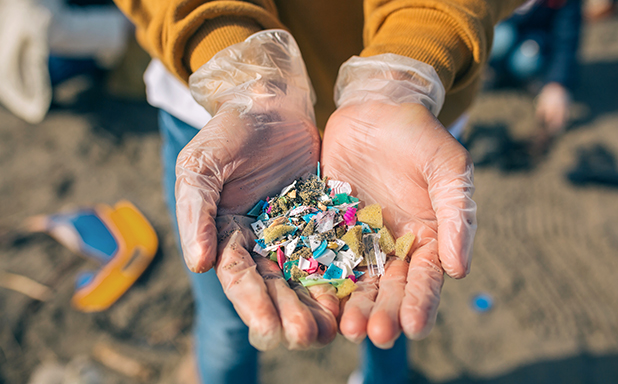The British public is still largely unfamiliar with microplastics and how they relate to everyday domestic plastic usage, a new study has revealed.
Despite wide-scale media attention in recent years, and the so-called ‘Blue Planet’ effect set in action by Sir David Attenborough’s ground-breaking BBC series, most participants in the study were either unaware of microplastics, or viewed them as a distant problem, unconnected to their own plastic use.
“People struggle because microplastics are hard to understand in terms of how they originate, and it was difficult for most people to make the link between what they do on an everyday basis – say, using a plastic bag – and the idea that they could be responsible for plastics in the ocean,” said Dr Lesley Henderson, a reader in sociology and communication at Brunel University London, who published the study in the Marine Pollution Bulletin.
What are microplastics?

Microplastics are fragments of plastic – under 5mm in length – which are either tiny before they enter the environment, as is the case with microbeads, or which start as a larger piece of plastic, like a shopping bag, which then degrades down into smaller pieces. Evidence of microplastics is not only found throughout the seas and oceans, but also in rivers, soils, and in the tissue of animals and plants.
It is estimated that there are 5.25 trillion plastic particles in the world’s oceans – nearly 700 pieces for every person on the planet – although it’s still unclear how harmful their presence is to humans.
For further information: https://www.mcsuk.org/clean-seas/microplastics
Researchers worked with six focus groups, which were broken down into categories such as ‘young mothers’ or ‘community centre helpers’, to try and discover whether the increased media coverage of microplastics was having a positive effect on public understanding.
Each group was asked to fill in a series of questionnaires and participate in group exercises, such as watching a news report on plastic pollution or the documentary film A Plastic Ocean, to see if they trusted and understood their messages.
“We wanted to look at what people knew already and whether they changed their minds or not as a result of watching those stories,” said Dr Henderson.
They found that the majority of participants were not only unaware of how microplastics come to be in the ocean, but were ‘surprised at the sheer scale of the problem and at the idea of plastics in the food chain’.
“Macroplastics made more sense to them,” said Dr Henderson. “Everyone was familiar with large pieces of floating plastics. And the myth of the Great Pacific Garbage Patch – a floating island ‘the size of Texas’ – was still really powerful.”
Dr Henderson said the respondents had a ‘visceral’ response to the images and videos used in the research sessions, but noted ‘shock and disgust does not equate with sustained change’.
“It is really important for non-scientists to know what microplastics are because we all need to play a part in reducing plastic waste,” said Dr Henderson. “It is now understood by scientists that human behaviour is the sole source of marine litter.
“It is vital we look at what people know about the issue and where there may be confusion or misconceptions if we are to change people’s behaviour.”
Making sense of microplastics? Public understandings of plastic pollution (Open Access) is published in the journal Marine Pollution Bulletin
For further information on Brunel's Institute of Environment, Health and Societies, please visit: brunel.ac.uk/research/Institutes/Institute-of-Environment-Health-and-Societies
Reported by:
Tim Pilgrim,
Media Relations
+44 (0)1895 268965
tim.pilgrim@brunel.ac.uk